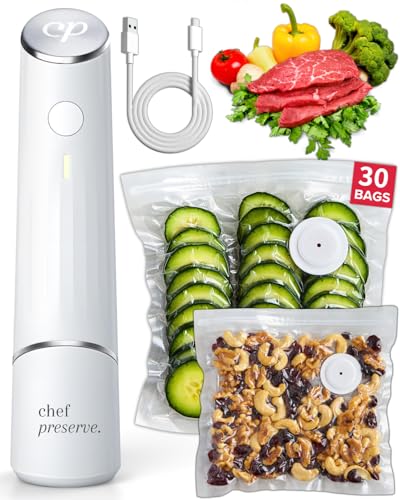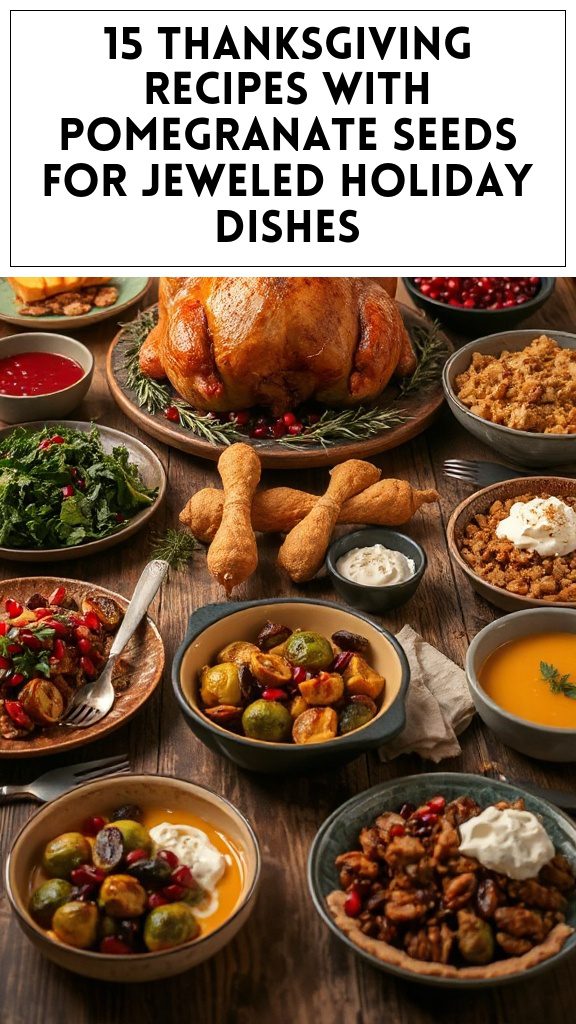Origin of Easter Traditions
Although Easter is widely celebrated across the globe, its origins are rooted in a blend of ancient customs and religious significance that span centuries.
The holiday’s rich tapestry weaves together symbolic elements from various cultures, particularly the spring festivities that herald new beginnings. The egg, a prominent Easter symbol, represents rebirth and renewal, reflecting the season’s vibrancy.
Additionally, many Easter traditions can be traced back to pagan spring rituals, celebrating fertility and the resurgence of life after winter. As Christianity spread, these customs were adapted, intertwining the resurrection of Jesus Christ with themes of hope and renewal.
This fusion of faith and tradition has transformed Easter into a joyous occasion, inviting communities to gather and celebrate life in all its forms.
- The Original Pro Chopper - Our superstar veggie slicer has been creating waves on TikTok! Simple to use,...
- Easy Meal Prep with Rust-Resistant Blades - Our vegetable chopper is perfect for anyone who wants to eat...
- 5-Star Design - The soft-grip TPU handle ensures controlled chopping, while the non-skid rubber base...
Gluten-Sensitive Individuals and Families
How can families with gluten-sensitive individuals celebrate holidays without feeling excluded? Embracing gluten-free substitutions allows everyone to partake in festive gatherings without compromising on taste or tradition.
By utilizing gluten-free flours and replacing wheat-based ingredients, families can create delicious scones, breads, and pastries tailored to accommodate dietary needs. These adaptations not only ensure inclusivity but also encourage creativity in the kitchen.
Families can explore a variety of gluten-free recipes that bring equal joy and flavor to their celebrations. As loved ones gather around the table, these carefully crafted dishes foster connection and understanding, ensuring that every participant feels valued.
Through thoughtful preparation, gluten-sensitive individuals can enjoy the seasonal festivities alongside their families with confidence and delight.
- Makes Everything Simple : Just forget your bagged cheese! Only turn the handle for several times and get...
- Premium Material : All parts of the rotary cheese grater are made of food grade ABS material, no BPA. The...
- Three Option Grater : The parmesan cheese grater finishes food preparation with slicing, shredding and...
Essential Ingredients

Creating buttery Easter brunch scones requires a selection of essential ingredients that ensure a rich flavor and delightful texture. The foundation typically includes all-purpose flour, but for those seeking gluten-free alternatives, a high-quality gluten-free flour blend works wonderfully without compromising taste.
Rich, unsalted butter contributes to the scone’s tender crumb, while a hint of sugar adds sweetness and enhances the festive flavor. Freshly zested orange peel introduces a citrusy brightness that elevates the scones, complemented by baking powder for the ideal rise.
Finally, buttermilk brings moisture and tang, resulting in the perfect balance of flavors. Incorporating these key ingredients will yield scones that are not only satisfying but also delightful for any Easter celebration.
- 💰 REDUCE WASTE AND SAVE MONEY: Chef Preserve keeps FOOD FRESH 5 TIMES LONGER than non-vacuum storage...
- ✅ POWERFUL, QUICK & EASY TO USE: Simply press the button to start. The device vacuum seals a bag in 5...
- ♻️ REUSABLE & RESEALABLE BAGS: Chef Preserve comes with dishwasher, freezer, refrigerator, and...
Cooking Steps
To embark on the journey of making buttery Easter brunch scones, one must first prepare the workspace and gather all essential ingredients.
They begin by mixing the dry components—a blend of flour, sugar, baking powder, and salt—creating a dry base brimming with potential.
Next, cold butter is cut in until the mixture resembles coarse crumbs, infusing richness into the dough. Gradually, milk is added, followed by any festive additions such as zest or dried fruit, ensuring each bite bursts with flavor.
The dough is gently kneaded and shaped before being placed on a baking sheet.
As the scones come together, the anticipation builds for the perfect addition to any Easter recipes, making them ideal for lively festive gatherings filled with joy.
- Generous Capacity: 7-quart slow cooker that comfortably serves 9+ people or fits a 7-pound roast
- Cooking Flexibility: High or low slow cooking settings, with convenient warm function for ideal serving...
- Convenient: Set it and forget it feature enables you to cook while at work or performing daily tasks
1. Preheat the Oven to 350°F

As the kitchen fills with the scent of anticipation, the oven is set to preheat at 350°F. This crucial step is a fundamental baking technique that ensures even heat distribution, resulting in perfectly baked scones.
At 350°F, the oven creates an ideal environment for the dough to rise, developing both texture and flavor. Different scone variations can benefit from this temperature, whether they are sweet or savory.
Furthermore, preheating the oven serves as a reminder to prepare the dough meticulously. As the temperature increases, bakers can gather their ingredients, blending flavors and textures that will eventually meld together into golden, buttery bliss.
In this moment, the scones prepare to transform into a delightful brunch centerpiece, inspired by the new season.
- 100% Leak-proof: Guaranteed no-spill seal and secure latches
- Crystal-clear Tritan Built: Stain-resistant and odor-resistant material for a clear view of contents
- Lightweight & Sturdy: Easy to carry, yet durable for everyday use
2. Mix Dry Ingredients Thoroughly

Combining the dry ingredients requires attention and care to achieve the perfect scone texture. The success of these buttery Easter brunch scones hinges on precise ingredient ratios, which ensure the balance of flavors and proper rise during baking.
Utilizing effective mixing techniques, such as whisking flour, baking powder, and sugar together, prevents clumping and promotes an even distribution of leavening agents. This step is crucial, as inconsistencies in the dry mixture can lead to uneven scone texture, affecting their lightness.
Incorporating salt enhances overall flavor, while optional add-ins like spices or zest can be blended seamlessly into the dry mix. Careful consideration of these elements lays the foundation for a delightful, flaky scone, preparing the way for the next steps in the recipe.
- 𝗘𝗳𝗳𝗼𝗿𝘁𝗹𝗲𝘀𝘀 𝗪𝗲𝗶𝗴𝗵𝗶𝗻𝗴: Supports 5 units...
- 𝗣𝗿𝗲𝗰𝗶𝘀𝗲 𝗥𝗲𝘀𝘂𝗹𝘁𝘀: Accurately weighs up to 11 lb/5 kg with 1 g...
- 𝗦𝗶𝗺𝗽𝗹𝗲 & 𝗖𝗼𝗺𝗽𝗮𝗰𝘁: The small and sleek scale is a perfect fit for...
3. Combine Wet Ingredients Separately

The process of combining wet ingredients is crucial for achieving the desired consistency and flavor in the buttery Easter brunch scones. In a separate bowl, liquid components such as milk, eggs, and vanilla extract harmonize to create a luscious mixture that infuses the scones with moisture and richness.
This method ensures an even distribution of flavors, allowing each bite to deliver a delightful taste experience. Careful attention to the balance of these wet ingredients is essential, as it directly influences the scones’ texture—preventing them from becoming too dense or too dry.
- Instant Read Food Thermometer | Our instant read thermometer features a temperature probe and advanced,...
- Multi-Use | From bbq thermometer to baking thermometer, our digital food thermometer for cooking is...
- Easy-Read Digital Thermometer For Cooking | Large instant thermometer dial with bright blue backlight...
4. Fold in Fruit and Nuts

Once the wet ingredients have been perfectly blended, attention turns to the delightful addition of fruit and nuts, elements that elevate the scones in both flavor and texture.
A thoughtful selection of fruit, such as succulent blueberries, tart cranberries, or zesty orange zest, can significantly enhance the scone’s overall profile. Each bite bursts with juicy sweetness, creating a delightful contrast to the buttery base.
Complementing the fruit, various nut pairings—like crunchy pecans, earthy walnuts, or crisp almonds—offer a satisfying crunch and nutty depth, enriching the experience.
It is essential to fold these ingredients in gently, ensuring an even distribution that maintains the lightness of the dough while promising a festive and flavorful treat for the Easter table.
- Versatile 54-Piece Collection: Elevate your kitchen with the Home Hero 54-Piece Kitchen Utensil Set, a...
- Durable and Long-Lasting: Crafted from premium stainless steel, these kitchen utensils are designed to...
- Perfect Holiday Gift: Delight your loved ones with this kitchen utensils gift set this festive season....
5. Knead the Dough Gently

Kneading the dough gently is crucial in crafting perfectly fluffy scones, as this delicate process helps to develop the necessary structure without overworking the gluten-free flour.
The goal is to achieve an ideal dough texture that balances softness and elasticity, ensuring the scones rise beautifully during baking. As the baker’s hands engage in gentle kneading, they should focus on lightly folding and pressing the dough, blending the ingredients without aggression.
Overworking the dough can lead to a tough and dense scone, negating the desired airy quality. Instead, expert kneading allows tiny pockets of air to be trapped, which will result in a delightful, fluffy treat.
This simple yet mindful technique is key to achieving scones that are heavenly in both taste and texture.
- 24-ounce insulated stainless-steel water bottle with a FreeSip spout and push-button lid with lock
- Patented FreeSip spout designed for either sipping upright through the built-in straw or tilting back to...
- Protective push-to-open lid keeps spout clean; convenient carry loop doubles as a lock
6. Shape the Dough Into Balls

Shaping the dough into balls is a crucial step in preparing perfect scones, as this technique ensures even baking and enhances the final presentation.
Once the dough has reached the right consistency—soft but not overly sticky—the next phase begins. Using clean hands, one can gently scoop portions of dough, rolling them into smooth, uniform balls.
This method not only facilitates even heat distribution during baking but also creates an appealing look that is more inviting.
Various shaping techniques can be employed, including the gentle palm-roll and the two-handed pinch. Mastering these approaches ensures that the scones rise beautifully, maintaining their delicate texture and rich buttery flavor, making them a delightful addition to any Easter brunch spread.
7. Add to Serving Platter

With the scones perfectly shaped and ready for indulgence, the next step involves presenting them in an appetizing manner. A large, decorative serving platter serves as the foundation, enhanced with vibrant easter table decorations such as fresh flowers or colorful napkins.
Each scone is arranged with care, their golden tops glistening in the spring sunlight, enticing guests to dig in. Complementing this display, a selection of festive drink pairings like refreshing fruit-infused waters or sparkling lemonades can be placed nearby, inviting conversation and celebration.
The overall presentation fosters a warm, inviting atmosphere, making the scones not merely a treat but a centerpiece that embodies the joy of the season, encouraging everyone to gather around the table and share in the festive spirit.
Serving and Pairing Suggestions

How does one elevate the experience of buttery Easter brunch scones?
Thoughtful serving and pairing suggestions can transform a delightful treat into an unforgettable centerpiece. Complementing these scones adds depth to an Easter brunch spread, enhancing their rich buttery flavor and zesty orange glaze.
- Pair with fresh fruit salad, adding a burst of color and freshness.
- Serve alongside clotted cream for a touch of indulgence.
- Introduce a pot of herbal tea or a refreshing mimosa for a lively drink option.
- Consider including an assortment of jams for guests to explore different flavors.
These perfect pairings not only enhance the scones’ appeal but also create an inviting atmosphere, ensuring every bite is savored during the festive celebration.
Tips and Variations

To elevate the enjoyment of buttery Easter brunch scones, experimenting with tips and variations can bring new life to this classic recipe. Utilizing diverse baking techniques and flavor variations allows for personalization while retaining the essence of the scone.
- Incorporate fresh herbs like rosemary or thyme for an aromatic twist.
- Experiment with different fruits, such as blueberries or cranberries, to enhance sweetness and texture.
- Substitute part of the butter with cream cheese for a richer, tangy flavor.
- Drizzle the orange glaze over warm scones to create a delightful, slightly melty presentation.
These simple adjustments not only refresh the scone experience but also invite creativity into the baking process, making each batch uniquely enjoyable for Easter and beyond.
Kitchen Tools
When preparing buttery Easter brunch scones, having the right kitchen tools on hand can significantly enhance both the baking process and the final result. Key kitchen gadgets and essential tools can streamline tasks and promote efficiency.
| Kitchen Gadget | Function | Importance |
|---|---|---|
| Mixing Bowl | Combines dry and wet ingredients | Essential for uniform mixing |
| Pastry Cutter | Shapes scones | Key for achieving perfect edges |
| Silicone Baking Mat | Prevents sticking | Helps in even baking and easy cleanup |
These tools offer bakers a smoother experience, ensuring scones achieve that perfectly flaky texture. Investing in quality kitchen tools not only elevates the scone-making journey but also adds joy to baking, resulting in delightful creations for everyone to enjoy.
Essential Equipment
A successful baking endeavor begins with essential equipment that simplifies the process and ensures consistent results. For those preparing buttery Easter brunch scones, having the right baking tools is crucial for achieving the perfect texture and flavor.
Key kitchen essentials include:
- Mixing Bowls: Sturdy and various sizes for combining ingredients efficiently.
- Pastry Cutter: Ideal for incorporating butter into flour to create a flaky texture.
- Baking Sheet: A non-stick option allows for even baking and easy removal of scones.
- Rolling Pin: Essential for shaping and rolling out dough to the desired thickness.
Utilizing these tools not only streamlines preparation but also enhances the overall baking experience, resulting in delightful scones that will impress family and friends alike.
Nutritional Information (Estimated, per serving)
Baking buttery Easter brunch scones not only delights the palate but also warrants a closer look at their nutritional profile. These scones, especially when made gluten-free, provide numerous benefits, appealing to those with dietary restrictions while maintaining nutritional balance. The ingredients work harmoniously to create a treat that is satisfying yet mindful of health.
| Nutrient | Amount per serving | % Daily Value |
|---|---|---|
| Calories | 210 | 10% |
| Total Fat | 10g | 15% |
| Carbohydrates | 28g | 9% |
| Sugars | 5g | – |
| Protein | 3g | 6% |
This overview highlights how these scones can be both indulgent and nourishing, lasting over Easter and beyond.
Easter-Inspired Baked Goods

Easter-inspired baked goods bring a sense of joy and celebration to festive gatherings, transforming ordinary moments into delightful experiences. The vibrant Spring flavors evoke the freshness of the season, making them a much-anticipated addition to any Easter brunch.
Some popular choices include:
- Fluffy Gluten-Free Easter Bread: A light, airy treat that accommodates dietary needs.
- Carrot Cake Muffins: Bursting with spices and the sweetness of grated carrots.
- Lavender Lemon Shortbread: A fragrant twist on a classic cookie, perfect for tea time.
- Coconut Macaroons: Chewy and sweet, these offer a delightful nod to the holiday.
Each of these Easter desserts imbues the table with warmth and festivity, captivating all who partake in the seasonal celebration.
Troubleshooting
Troubleshooting common issues with scone recipes can significantly enhance the final product and ensure a successful brunch experience.
For those struggling with scone textures, underbaking or overbaking can often be remedied by making baking temperature adjustments. Reducing the temperature by 25°F can promote even cooking, resulting in tender, buttery interiors.
Ingredient substitutions can also play a crucial role; for instance, using cold butter instead of room temperature can create the desired flakiness. If one encounters dryness, incorporating additional liquid or yogurt can enrich the dough.
Conversely, if the mixture is too sticky, a dash more flour will help achieve the perfect consistency. By addressing these factors, bakers can elevate their scones to delightful heights.
Conclusion
As the aroma of freshly baked scones fills the air, the satisfaction of achieving the perfect brunch treat becomes evident.
These buttery scones, topped with a zesty orange glaze, epitomize Easter baking with their rich flavor and delightful texture. Ideal for festive gatherings, they serve as a charming centerpiece alongside other seasonal delights.
The simplicity of the recipe allows bakers of all skill levels to create an impressive dish that will impress family and friends. Each bite offers a warm, comforting experience, evoking the spirit of celebration.
As Easter approaches, these scones will not only enhance the brunch table but also foster cherished memories, making them a must-try addition for any joyous occasion.
















